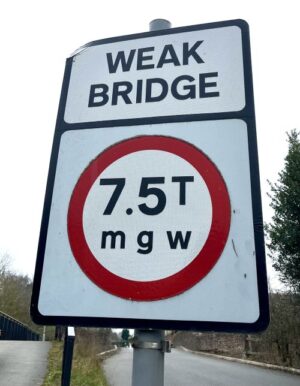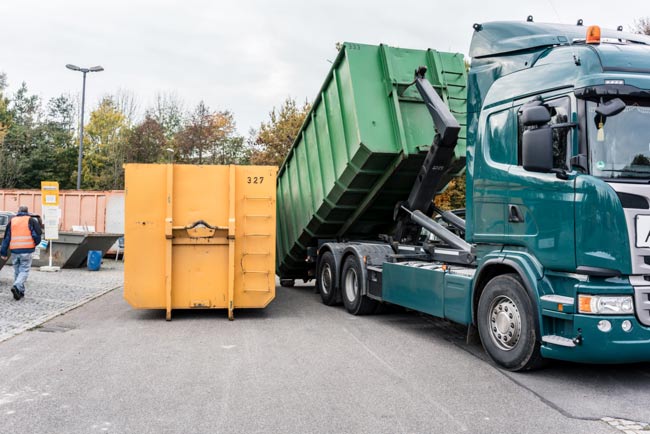Contents
- HGV roadworthiness in the UK — what actually matters
- Legal responsibility – drivers vs operators
- How HGV roadworthiness is assessed in practice
- Daily walkaround checks (risk-ranked, not tick-box)
- Defect reporting and nil reports
- Training, systems, and consistency
- Consequences of non-compliance
- Practical takeaway. What actually protects drivers and operators
- FAQs
HGV roadworthiness in the UK — what actually matters
HGV roadworthiness is a legal requirement, not a maintenance standard or best-practice guideline. In enforcement terms, a vehicle is roadworthy only if it is safe to use and there is clear evidence that it has been properly checked, defected, and maintained.
In practice, roadworthiness is judged on three things:
- The condition of the vehicle at the time of use
- Whether daily checks were carried out correctly
- Whether those checks and any defects were properly recorded
A vehicle can be mechanically sound and still be treated as non-compliant if records are missing, incomplete, or inconsistent. During inspections, paperwork failures are commonly treated as evidence that checks were not done — not that they were simply undocumented.
This is why daily walkaround checks and defect reporting are not administrative tasks. They are the first line of defence for both drivers and operators when roadworthiness is questioned.
Legal responsibility – drivers vs operators
Responsibility for roadworthiness is shared, but enforced individually.
Driver responsibility
The driver is legally responsible for ensuring that the vehicle is roadworthy at the point it is driven. This includes:
- Carrying out a daily walkaround check
- Identifying and reporting defects
- Refusing to drive a vehicle that is unsafe or prohibited
If a defect is found at the roadside that should reasonably have been identified during a daily check, enforcement action may be taken against the driver – regardless of who owns or maintains the vehicle.
Operator responsibility
The operator is responsible for putting systems in place that make roadworthiness achievable and verifiable. This includes:
- Providing training on daily checks
- Ensuring defect reporting systems are used
- Making sure defects are rectified promptly
- Retaining records for inspection and audit
Operators are not insulated from enforcement because a driver “missed something”. If systems, supervision, or record-keeping are inadequate, responsibility escalates quickly.
In enforcement terms, drivers are assessed on use; operators are assessed on control.
How HGV roadworthiness is assessed in practice
Roadworthiness is assessed through roadside inspections, targeted stops, and operator audits carried out by the Driver and Vehicle Standards Agency under powers set out by GOV.UK.
What inspectors look for first
In most inspections, the initial focus is not the full maintenance history. It is:
- Evidence of a recent daily check
- Defect reports for that vehicle
- Proof that known defects were rectified before use
If records are missing, unclear, or inconsistent, inspectors may assume that checks were not carried out properly. This often triggers deeper investigation.
Roadside checks vs audits
- Roadside inspections focus on immediate safety issues and visible defects.
- Audits focus on patterns: missing nil reports, repeated defects, poor record retention, or signs that checks are being rushed or skipped.
Repeated paperwork failures are treated as systemic problems, not isolated mistakes.
Why records matter as much as condition
From an enforcement perspective, records are the only proof that a vehicle was safe before it was driven. Verbal assurances carry no weight. A well-maintained vehicle with weak records is still a compliance risk.
This is why daily checks, defect reports, and nil reports are considered part of the roadworthiness system — not an optional add-on to it.
Daily walkaround checks (risk-ranked, not tick-box)
Daily walkaround checks are often treated as routine. In enforcement terms, they act as a risk filter. Inspectors are not interested in whether a checklist exists; they are interested in whether the check would reasonably have prevented the defect they have found.
Immediate prohibition items
These are defects that commonly result in a vehicle being stopped or prohibited if missed:
- Tyres showing damage, under-inflation, or exposed cords
- Wheel fixings that are loose, missing, or show signs of movement
- Braking defects, air build-up issues, or non-functioning warning systems
- Steering defects or abnormal free play
- Inoperative lights where visibility or signalling is affected
If these are present, inspectors will usually conclude that the daily check was inadequate.
Common failure points
These are areas that frequently feature in enforcement action because checks are rushed or superficial:
- Tyres checked only at a glance
- Brake hoses and lines not examined properly
- Couplings and trailer connections assumed to be secure
- Warning lamps ignored or dismissed as intermittent
These are often recorded as issues that should have been identified during a proper daily check.
Often missed but still enforced
Some items are overlooked because they do not feel urgent, but they are still enforceable:
- Number plates and reflectors
- Spray suppression and body security
- Load restraint and body condition
- Excessive exhaust smoke or fluid leaks
Daily checks are expected to cover the entire vehicle or combination, not just the most obvious safety-critical components.
Supporting consistent checks
To support consistent checks and defensible record-keeping, an HGV Daily Check Sheet can be used to structure inspections and provide clear evidence that checks were completed correctly. This should be completed every day the vehicle is used and retained as part of the vehicle’s maintenance records.
Defect reporting and nil reports
Finding defects is not a failure. Failing to record them is.
Any defect or symptom that could affect safety must be recorded and reported before the vehicle is used again. This applies to obvious faults as well as developing issues such as warning lights, vibrations, or abnormal noises.
Why nil reports matter
A nil report confirms that:
- A daily check was completed
- No defects were identified at that time
- The vehicle was considered roadworthy at the start of use
From an enforcement perspective, missing nil reports are not neutral. They are often interpreted as evidence that checks were skipped or rushed.
What inspectors expect to see
Daily check and defect reports should clearly show:
- Vehicle identification
- Date of the check
- Details of any defects, or confirmation that none were found
- Who reported the issue
- What action was taken
- When rectification was completed
Incomplete, inconsistent, or retrospective records attract scrutiny quickly.
Training, systems, and consistency
Training is not judged on certificates alone. It is judged on outcomes.
Inspectors look for evidence that drivers understand what they are checking, that checks are recorded consistently, and that defects are dealt with promptly. Whether records are paper-based or digital matters far less than whether they are used properly and every day.
A simple system that is followed consistently is viewed far more favourably than a complex system that is applied unevenly.

Consequences of non-compliance
Failures in roadworthiness systems can lead to:
- Vehicle prohibitions at roadside
- Driver conduct hearings
- Operator compliance action
- Increased inspection and monitoring
Enforcement action is often driven by patterns, not single defects. Repeated missing records, recurring faults, or inconsistent checks indicate systemic failure and are treated accordingly.
Practical takeaway. What actually protects drivers and operators
From an enforcement perspective, roadworthiness is not judged on intention. It is judged on evidence.
If you do nothing else, the following four points are what consistently protect drivers and operators during inspections and audits:
- Daily walkaround checks are completed before use, not retrospectively
- Defects are recorded clearly and acted on promptly, even if they appear minor
- Nil reports are logged on days when no defects are found, creating a continuous record
- Records are retained and accessible, showing consistency rather than perfection
These steps demonstrate control, not just compliance. That distinction matters during enforcement.
FAQs
What is an HGV daily check?
An HGV daily check is a visual and functional inspection carried out before a vehicle is driven to confirm that it is roadworthy. It is a legal requirement and forms part of the evidence used to assess compliance.
Why are HGV daily checks legally required?
Daily checks are required because defects can develop quickly, particularly on high-mileage vehicles. They are intended to identify safety issues before a vehicle is used on the road and to prevent avoidable breakdowns or incidents.
What should I do if I find a defect during a daily check?
Any defect that could affect safety must be recorded and reported immediately. The vehicle should not be used again until the defect has been assessed and, where necessary, rectified. All actions taken should be documented.
If no defects are found, do I still need to record the check?
Yes. Recording a nil report confirms that a daily check was carried out and that no defects were identified at that time. Missing nil reports are commonly treated as evidence that checks were not completed.
How long should HGV daily check records be kept?
Daily check and defect records should be retained for a minimum period consistent with maintenance and inspection requirements. Records must be available for inspection and audit when requested.




